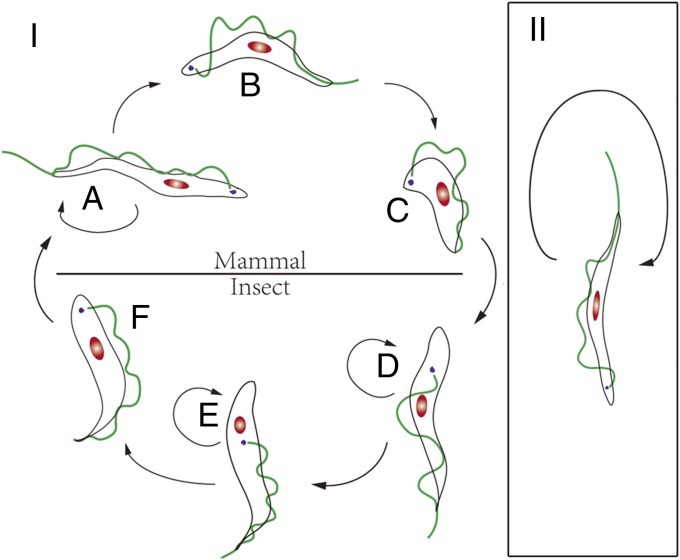Fig. 2.
Life cycles of T. brucei and T. evansi. (I) Life cycle of T. brucei (with fully functioning kDNA). Blood slender (normal) forms (stage A) differentiate, via an intermediate stage (stage B), into the stumpy form (stage C), which is the only stage with the necessary specific functions for infecting the insect vector. Once in the insect host (stages D–F), only the metacyclic form (stage F) in the vector can infect the mammalian host and differentiate into the slender form. The infected host can survive longer due to the regulated parasite growth and differentiation. (II) Life cycle of T. evansi (considered a mutant strain of T. brucei). Only the blood slender form (stage A) is found. It replicates directly (stages A and B), but it cannot differentiate into the stumpy form (similar to the dedifferentiation in a cancer cell). It loses the ability to infect the insect vector (cannot survive and differentiate within the insect vector). Some natural hosts can be killed by the infection of this parasite in a short time, depending on the mammalian species.

